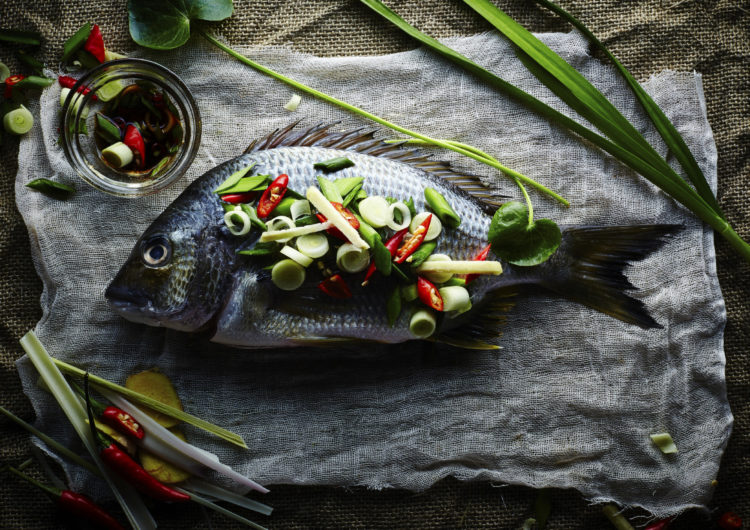The Paleo revolution is sweeping the nation, though it’s not exactly a new or trendy diet, since it’s roughly based on what cavemen ate.
Dr. Loren Cordain brought this eating regimen into the modern era in 2010 with his best-selling book, “The Paleo Diet.” The basic premise is to eat “real” food — food in its most natural state, with minimal processing. This includes vegetables, fruit, nuts, seeds, and naturally raised meat, poultry, and fish. It also means avoiding processed foods, grains, most forms of sugar, dairy, and in many cases, legumes.
Eliminating these things helps to remove dyes and preservatives in your food and also creates a relatively low-carb diet, which is one of the key reasons Paleo is healthy. Blood sugar levels remain low and stable. The diet is also high in nutrient-dense foods, antioxidants, omega-3 fatty acids, and fat-burning Conjugated Linoleic Acid (CLA).
Primitive diets like Paleo have been reported to reduce or prevent high cholesterol, high blood pressure, heart disease, diabetes, autoimmune diseases, allergies, digestive problems, depression, and more. Which is great, but what about those of us — triathletes, runners, cyclists, etcetera — who need carbs for energy?
Burning Fat for Fuel
With the Paleo diet, the key to powering the body for athletics is using less carbohydrates for fuel and more fat. Our ancient ancestors were strong, lean, fit, and muscular, and physiologically speaking, our bodies haven’t changed all that much — it’s the food we eat and the idea that glucose is king that has changed.
Dr. Stephen Phinney, a professor at University of California, Davis, has studied low-carb/Paleo diet performance for the last 30 years and concludes that accessing the thousands of calories of fat stored in the body “makes an athlete essentially ‘bonk-proof.’”
Fueling the body with a diet of healthy fats like butter, nuts, olive oil, lard, and coconut oil provides a longer-lasting fuel system that the body can access over an extended time period. And because it helps to burn your own body fat more efficiently, following a primal diet cuts body fat as well.
Where most athletes fall short is in the transition period. Changing the primary source of fuel that the body burns for energy is a process that can take weeks or months, not a few days. The best way to check out the Paleo diet and its affects on your body is to try it yourself. Give it six to eight weeks and see how your training progresses.
I recommend that people eat about 60 percent of their diet in fresh organic veggies, 15 percent in natural proteins, 15 percent in healthy fats, and the rest in nuts, seeds, and fruit. If you follow this diet even 90 percent of the time, you should be able to see noticeable health benefits and improved athletic performance and weight loss.
Can Paleo Be Unhealthy?
Short answer: yes and no. There are myriad interpretations that are called Paleo but aren’t. You can’t expect to load up on meats, fats, bacon, lard, eggs, and “natural” sugars and think you’re being healthy. You’ll only gain weight with this calorically dense diet.
“Some people who follow a Paleo diet have very poor nutrition — high saturated fat intake, low fiber, low unsaturated fat, and omega-3 fatty acid intake,” said Becky Adams, a registered dietician and certified personal trainer at Balanced Nutrition Therapy in Ballwin. “The idea behind Paleo is to continue to choose lean protein sources, and sometimes people sidestep that.
Some athletes struggle with a diet so strict on carbs due to the limited sources available on a Paleo diet. “For athletes, especially women, it’s important they eat enough deep-green leafy vegetables to get enough calcium and iron,” added Adams. “I also recommend beans and dairy as additional nutrient-rich sources, which are not allowed on the Paleo diet.
“There are benefits that are similar between healthful, balanced eating and the Paleo diet,” Adams said. “But we’re each individuals, and as a dietitian my job is to help every individual find a diet that’s healthful and sustainable for him or her, to increase performance, decrease chronic disease and illness, and promote healthy living. It’s not a one-size-fits-all type of deal.”
Author: Catherine Ebeling is a RN BSN. Read more about the Paleo diet and healthy eating on her website, simplesmartnutrition.com, and in her book “Fat Burning Kitchen.”


Leave A Comment